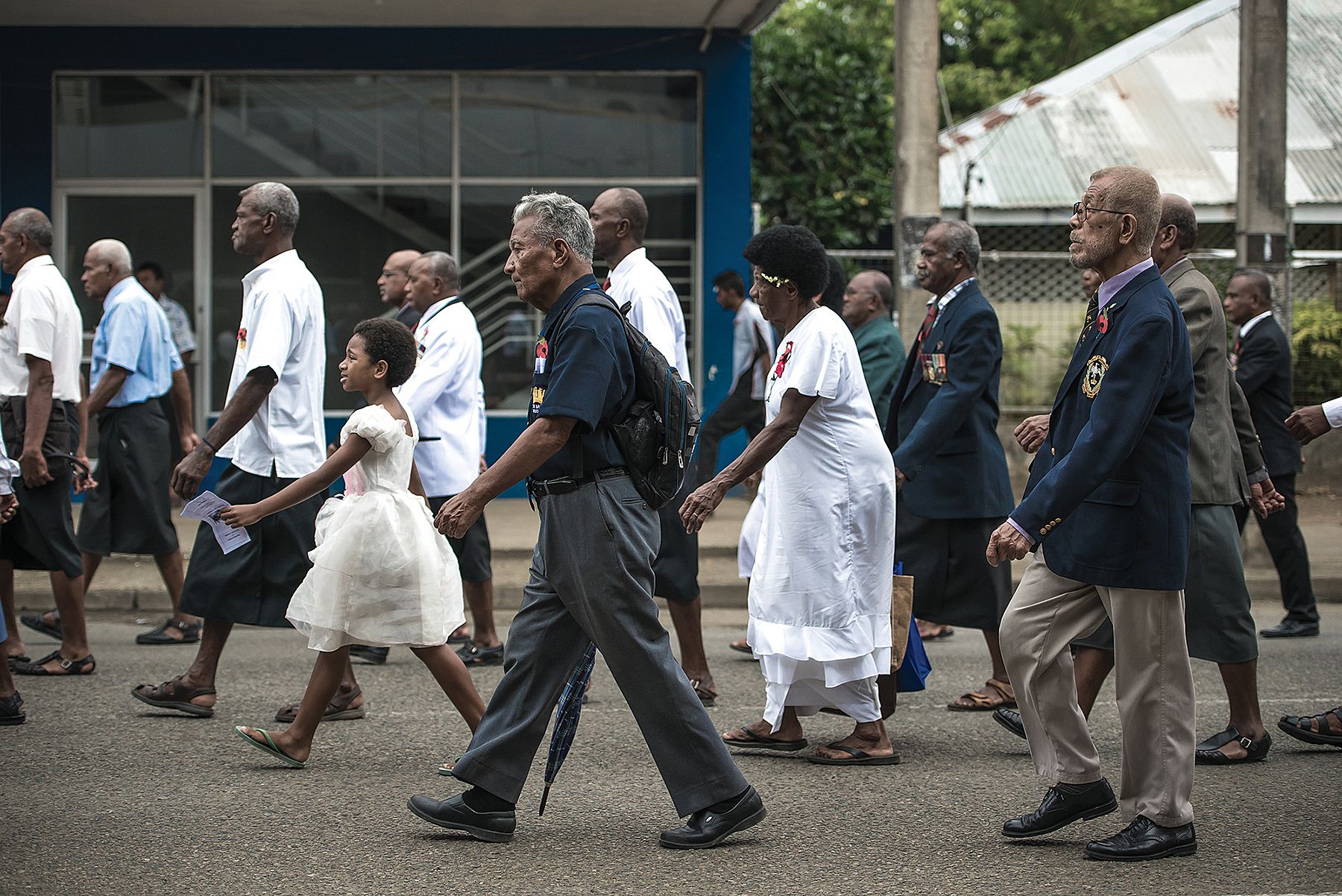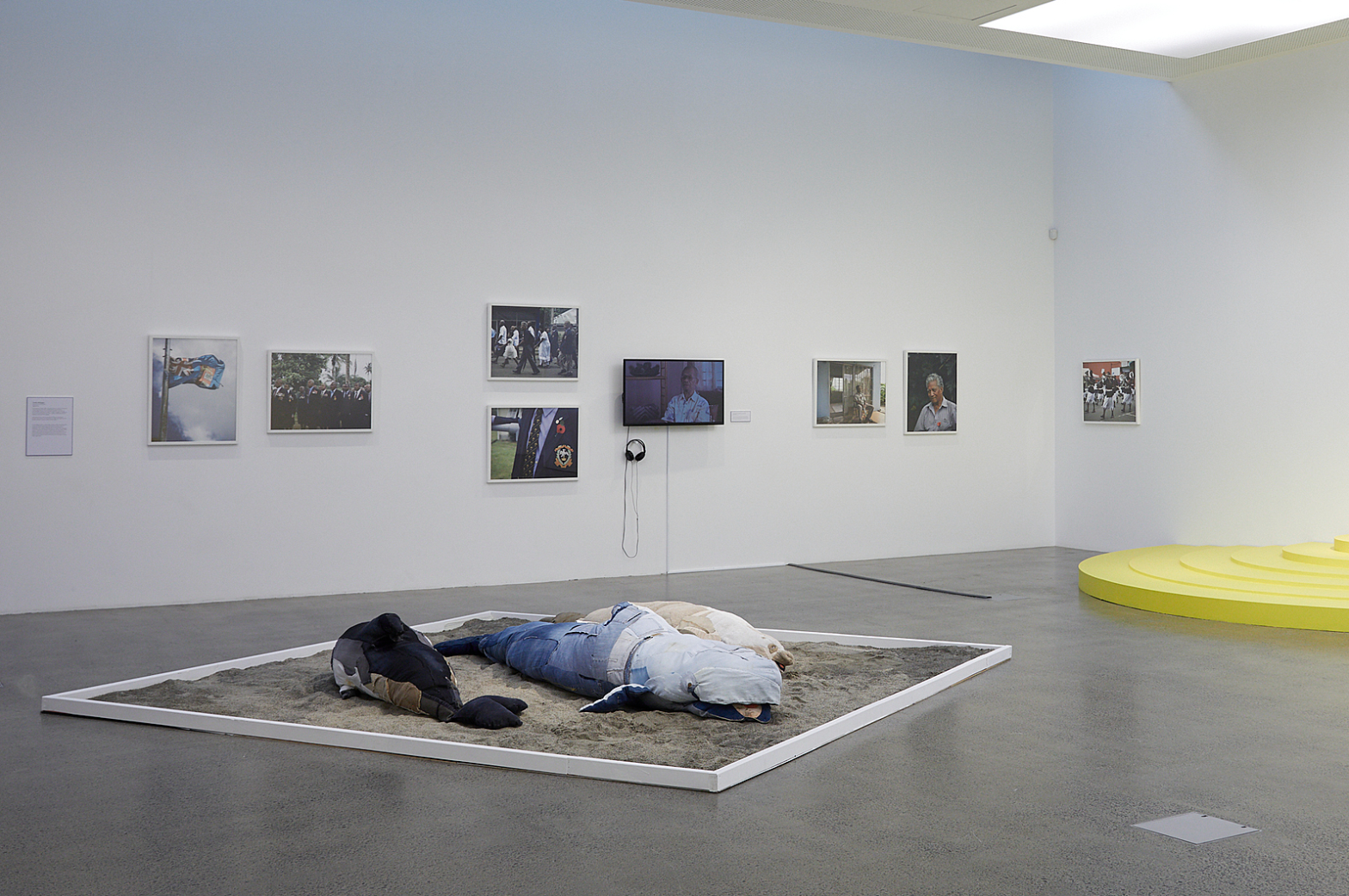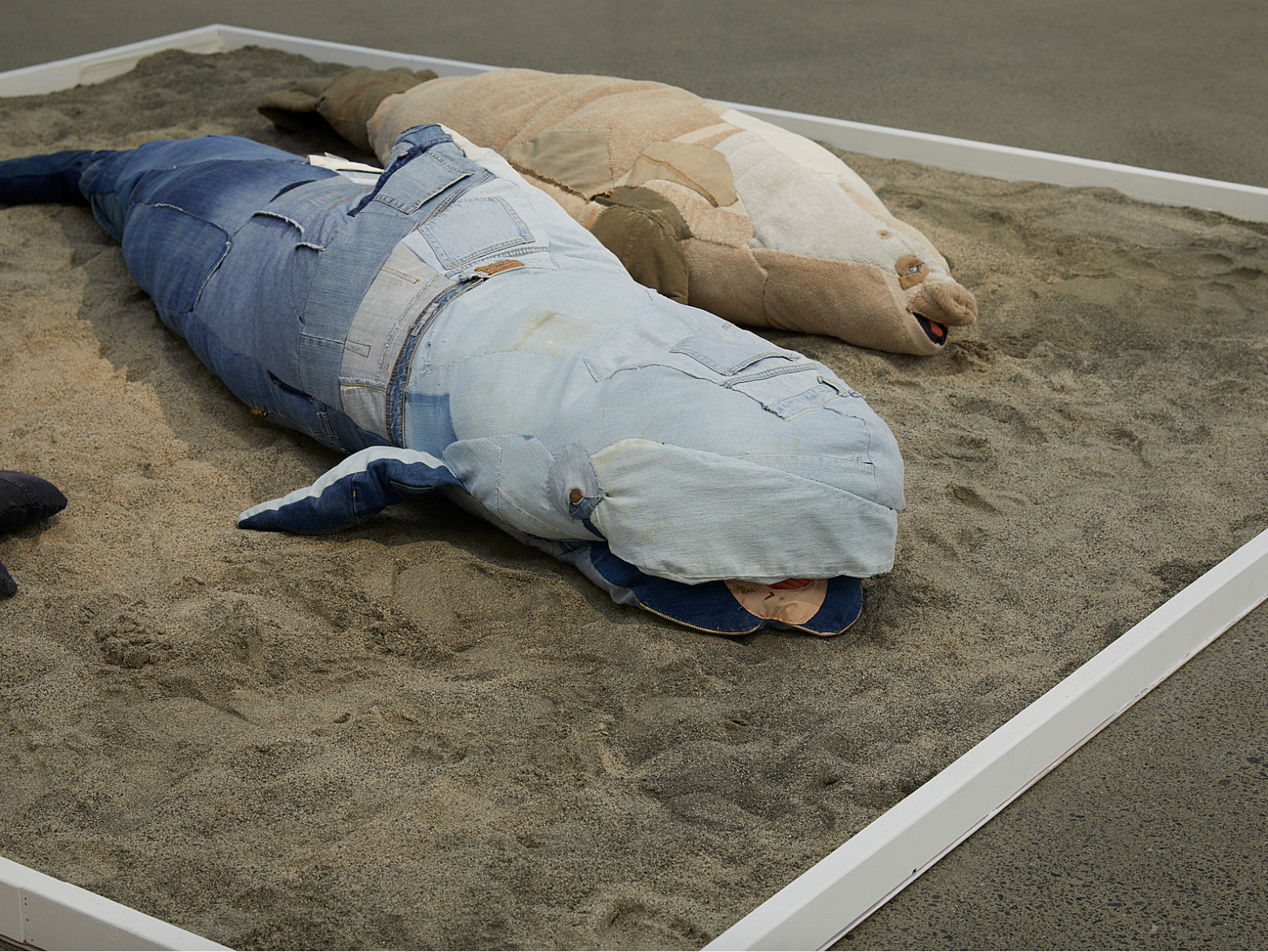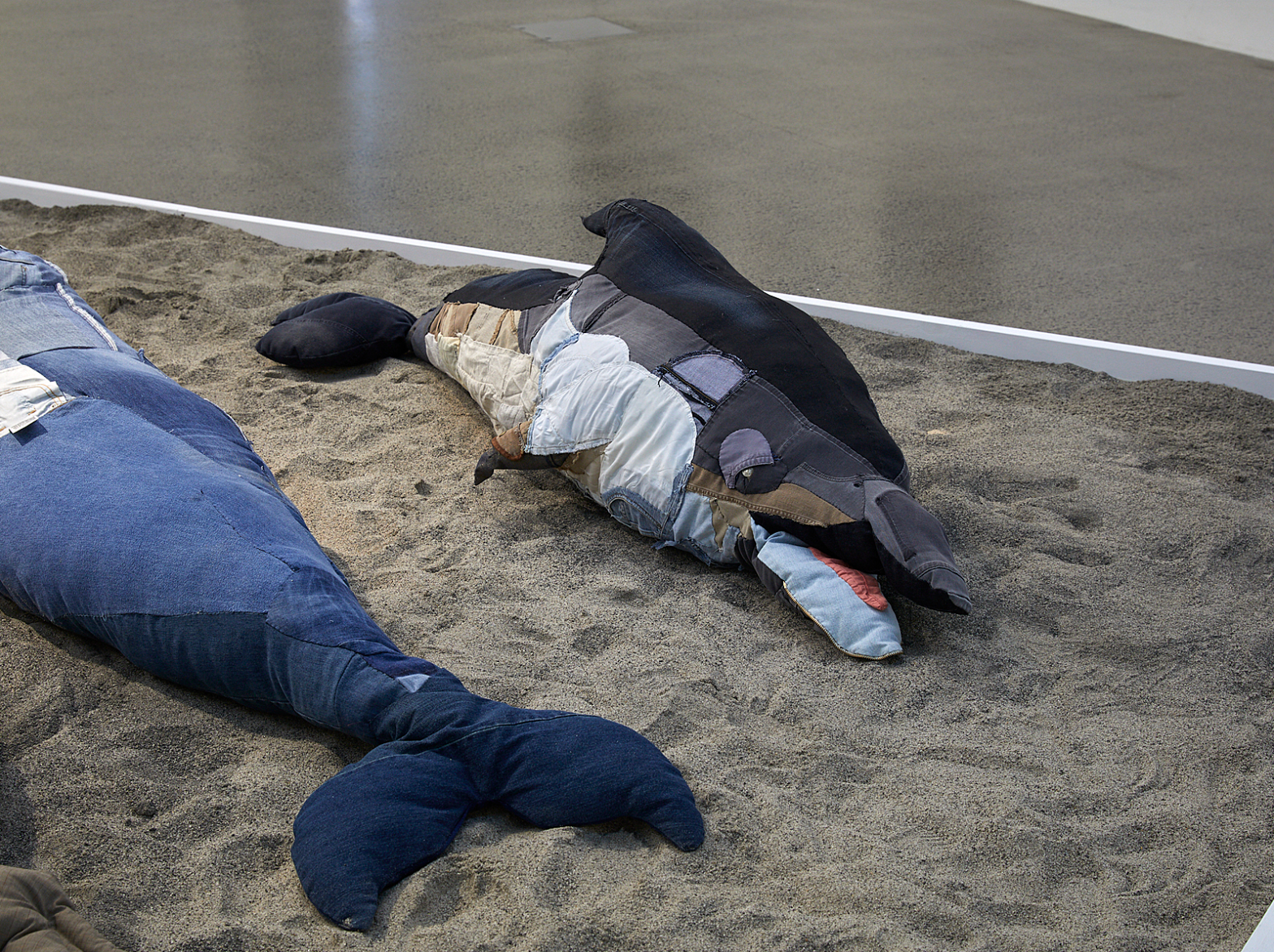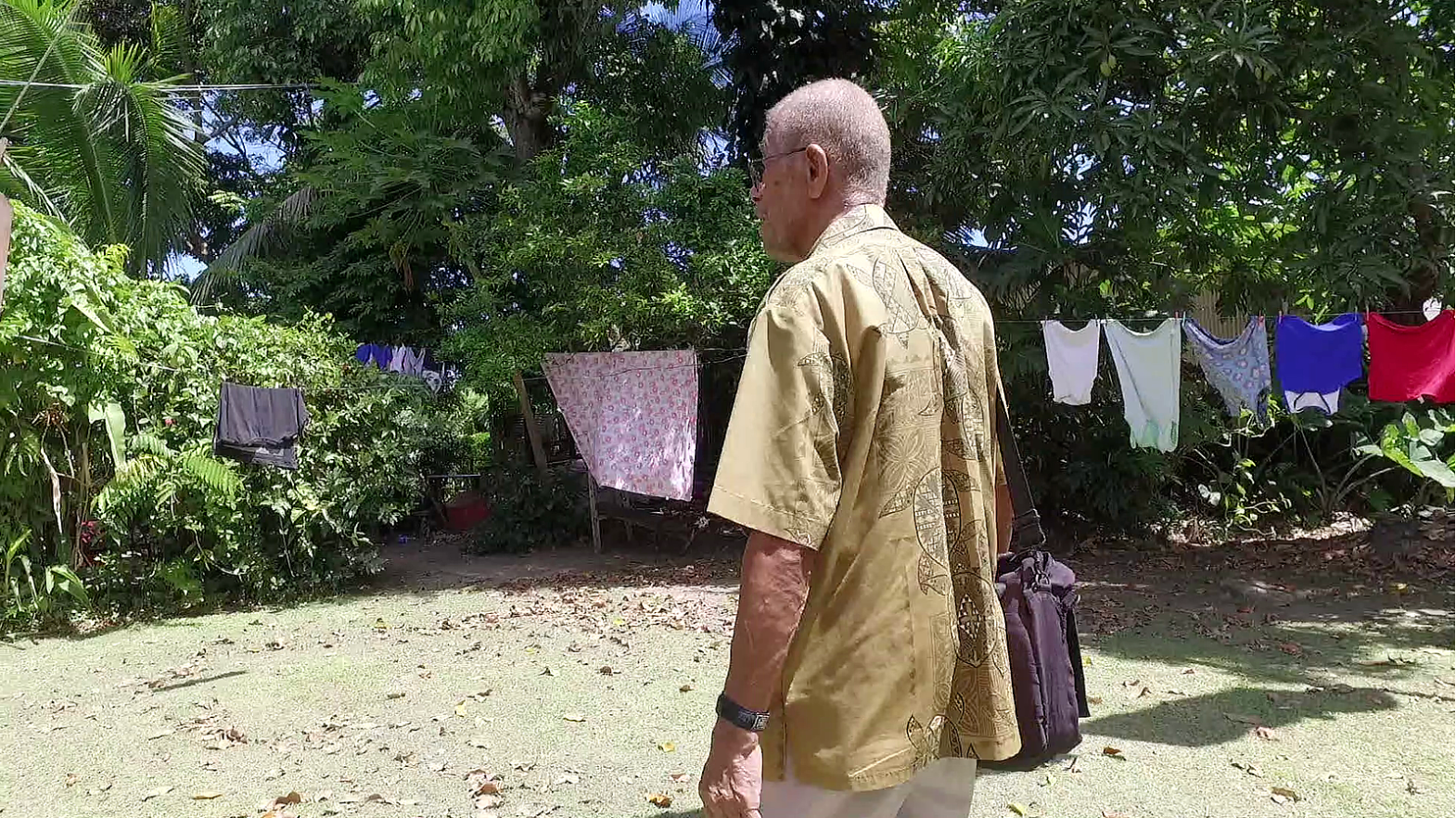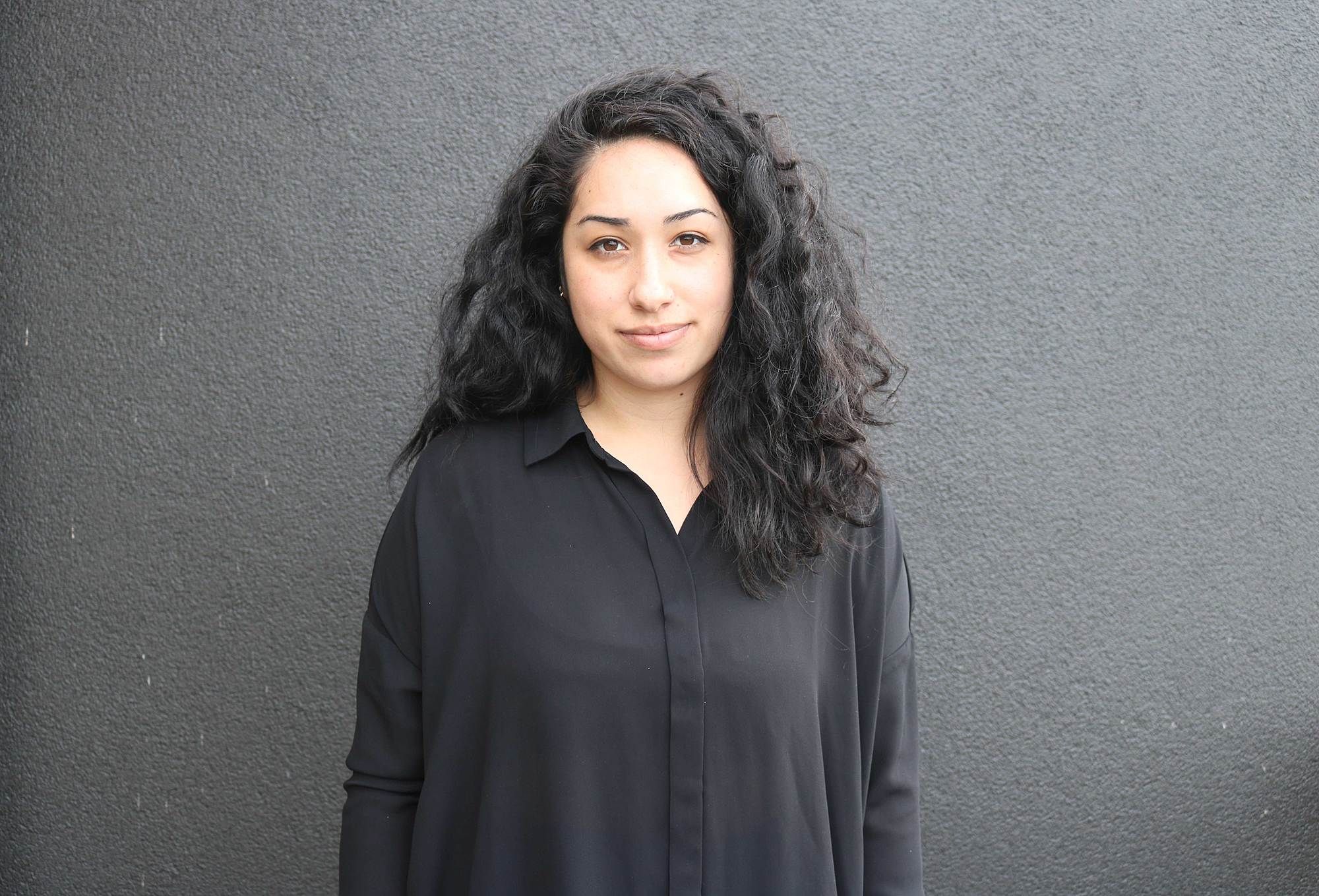The Future is a Possibility We Must Guard With Our Lives
The legacy of nuclear testing and the prospect of climate catastrophe shape the present and future of the Pacific. Lana Lopesi reviews The Future of Our Kids at Te Uru Waitākere.
The legacy of nuclear testing and the prospect of climate catastrophe shape the present and future of the Pacific. Lana Lopesi reviews The Future of Our Kids at Te Uru Waitākere.
Eight mamas stand in a row on the Rongelap Atoll. Dressed in blue, pink, red and floral mu’umu’u they wait to greet the Rainbow Warrior. One holds her face in her palm while another caresses a small baby wrapped in fabric; the others look to be mid-song perhaps. This photo is taken by David Robie, and above the women is a sewn banner, which reads, “We loved the future of our kids.” It’s 1985 and the women were being relocated by Greenpeace from their home to another, because of the decades-long effects of radiation poisoning.
Rongelap received an unprecedented dose radiation in 1954, when the United States tested its most powerful nuclear weapon in the test named Castle Bravo. The people of Rongelap were not warned of the test or protected in any way. After the testing, miscarriages and stillbirths doubled on Rongelap, and one report found that 69 percent of Rongelap children who were under ten in 1954 developed thyroid tumours. The impacts of radiation poisoning were profound. The women of Rongelap “loved” the future of their kids, their potential futures, their futures that they were robbed of.
As I write, 75 people – mostly children and babies – have died in Sāmoa from the measles epidemic. Sixteen people have died, and two more are presumed dead, from an unexpected volcanic explosion on Whakaari White Island. The sense of death around us is immense. My alarm goes off at 5am, but I stay in bed with my own babies longer than I did the day before because suddenly the assumption that our babies will have futures seems to no longer be a right, but a possibility we must guard with our lives.
This instability of futures underpins the latest exhibition at Te Uru. Curated by Ioana Gordon-Smith, The Future of Our Kids brings together work by international artists Jane Chang Mi (Honolulu, Los Angeles) and Torika Bolatagici (Melbourne). The exhibition draws its name from that David Robie photograph, a small print-out of which sits in the exhibition as a reference, and specifically the banner of the Rongelap women, to draw attention to the ongoing and future impacts of nuclear testing as well as climate change in the Pacific, suggesting an urgent call to action both today and tomorrow. Nuclear testing in the Pacific is often something which has been historicised in the past, yet this show draws attention to the multiple timescales underpinning anti-nuclear movements, and also the very real impacts felt still today.
Jane Chang Mi’s work suggests that it is our concern for our future generations, and our own children, that influences our desire to act politically. Impacted by the banner of the Rongelap women, Chang Mi recreated the banner using felt. Again it reads, “We loved the future of our kids.” Greeting us as we enter the multi-level gallery, it is perhaps the most poignant reminder that children are often a driving force within activism. I think of all the young voices rising up and marching across cities globally, demanding action on climate catastrophes.
After introducing this notion, the rest of Chang Mi’s attention is given to children themselves in an exploration of what an early-childhood ocean-based curriculum might look like. Two Suns (2019), Beached (2019) and No Title (2019) draw on sensory play as being vital to learning. And specifically to learning about the ocean. Engagement with the ocean from a young age thus can offer, “a pre-emptive strike against the erosion of the ocean ecology.” In Two Suns, two tiered, wooden concentric circles, built for children to climb on and crawl over, sit at opposite ends of the gallery space.
The structures, painted yellow, reference the sun as it has become synonymous to anti-nuclear campaigns and imagery. It was two suns that were said to be over Hiroshima on that fateful day in 1945; one was the dawn of a new day and the second was the nuclear bomb named Little Boy. But Chang Mi’s sculpture serves another purpose: to track the global average of expected sea-level rises over the next 70 years, with each tier measuring a decade. By combining references to nuclear testing and rising sea levels, Chang Mi closes the distinction between nuclear testing as something in the past and climate change as something in the future, showing us how they’re connected.
In Beached (2019), three to-scale ocean mammals – Risso’s dolphin, the short-beaked common dolphin and the Hawaiian monk seal, each made from repurposed fabric – sit on a bed of sand. Since the 1950s the American Navy has been using low-frequency sonar to assist with navigation and detection, however the sonar also has the side-effect of terrifying the mammals, which in some instances leads to self-beaching. Again designed to be played with by children, Beached demonstrates how artworks can also be learning tools. Both these artworks are also sculptural by nature, introducing a welcome element of spatial design – a difficult feat in this notoriously troublesome gallery space.
No Title (2019), Chang Mi’s final work in the exhibition, is a series of puzzles made from cherry wood. The puzzles are language terms for the Pacific Ocean used by countries that signed the Treaty of Rarotonga, a treaty banning nuclear testing signed after the bombing of the Rainbow Warrior. The work picks up a well-worn conversation here in Aotearoa: by what name should we call the Pacific Ocean? By displaying the overlapping and different names as objects of play, Chang Mi refuses to homogenise the plurality and reduce the scale, instead acknowledging the ocean as a complex region known differently by different people.
If Chang Mi is focused on the children of the future, than Torika Bolatagici concentrates on the now-elderly memories and first-hand experiences of the testing. Specifically, the 260 Fijian soldiers who were involved in the British nuclear testing programme of the 1950s, codenamed Operation Grapple, are the impetus for Bolatagici’s photographs and documentary excerpts.
Bolatagici’s Remembrance (Viti) (2016) documents the first veterans’ parade held for these particular soldiers, who witnessed nine tests between May 1957 and September 1958. Framed in white, the photos have both a stoic yet solemn nature. Hands hold a bible, while a Fijian flag ripped at the end blows in strong winds, veterans stand proud in their blazers adorned with military badges and red poppies; men, women and children walk in procession. There’s a sense that the honouring of these men isn’t only a celebration, but also a confrontation with darker times; a sense of a deception and of the conflicting position of being involved in the tests while also being victims and survivors of them at the same time.
Continuing this focus is Kirisimasi (2019), a documentary by Bolatagici, Nic Maclellan and Joji Nabalarua. The documentary is currently in post-production stage so, in For the Future of the Kids, Bolatagici presents snippets of interviews with veteran Paul Ah Poy, scientist Suliana Siwatibau and disarmament activist Losena Tubanavau Salabula. It was the chilling interview with veteran Paul Ah Poy that has lingered with me long after the exhibition. Ah Poy, who served in the Fiji Royal Naval Volunteer Reserve, today serves as President of the Fiji Nuclear Veterans Association.
As he peeked through closed eyes he saw bones through skin. When they were finally allowed to look up, the sun had disappeared; now there was a fireball in the sky.
Ah Poy tells of the lack of protection and information the veterans had at the time. Those from the Fiji Navy sat on mats outside, while the scientists hid in bunkers, shouting instructions through speakers. They were told to close their eyes, as they would burn, and to stay still as the bomb exploded. Ah Poy told of the heat he felt on his back; as they started to squirm from the heat, they were told again to stay still. As he peeked through closed eyes he saw bones through skin. When they were finally allowed to look up, the sun had disappeared; now there was a fireball in the sky. They were told to not talk about the tests when they got home.
Ah Poy witnessed seven tests in his time. Elderly now, he wishes he had children to look after him, grandchildren to spend time with. He did have a daughter but, sadly, she passed away at only three years old. No doubt he, too, loved the future she might have had.
Torika Bolatagici’s focus on a generation of Fijian veterans at the face of the nuclear testing teamed with Jane Chang Mi’s attempts to introduce ocean-knowing to children at an early age creates a poignant and sophisticated intergenerational approach to both nuclear and climate catastrophe. What is clear is how the histories of the past impact on and determine the way in which we stand today and walk forward. Thinking about the futures of kids, the futures which have been taken away, the non-existent futures and the futures we have to fight for, offers a moving message at this time of year. With so much death it’s hard to hold on to our futures, but this exhibition reminds us what’s at stake.
Jane Chang Mi and Torika Bolatagici
The Future of Our Kids
Te Uru Waitākere Contemporary Gallery
30 November 2019 – 1 March 2020
Feature image: Torika Bolatagici, Remembrance (Viti), 2016 (detail).
